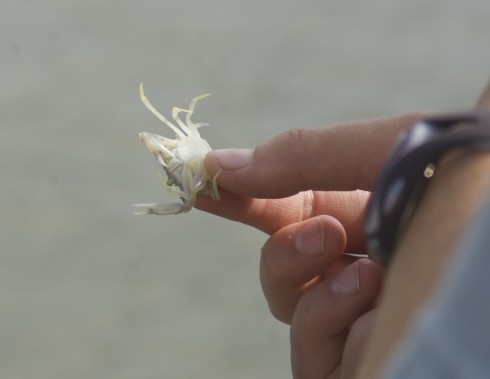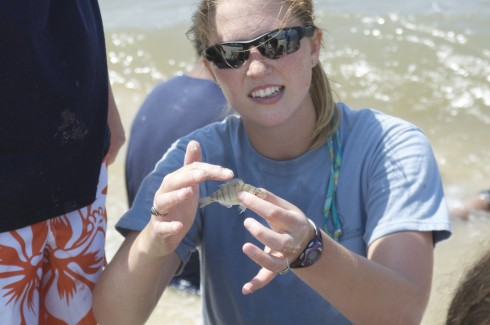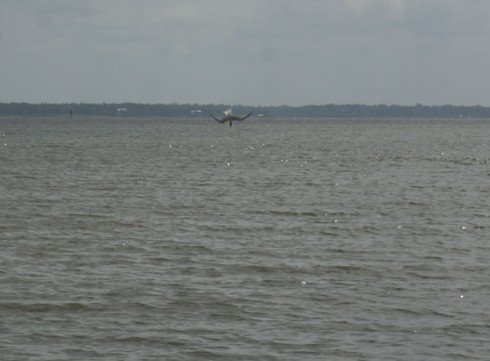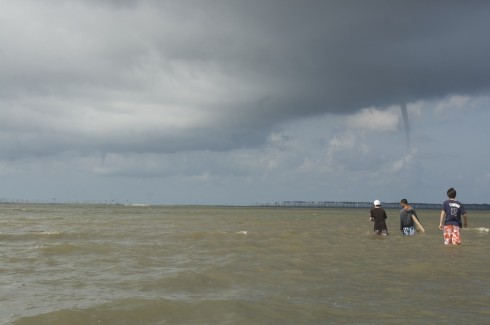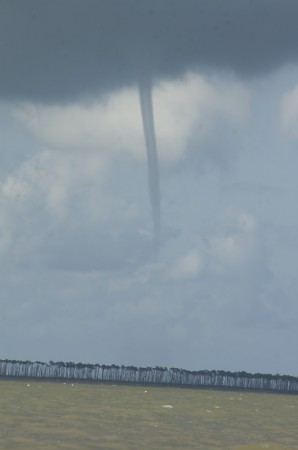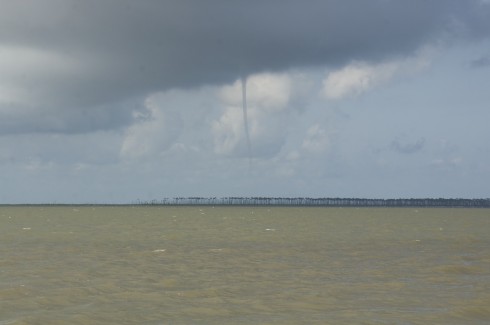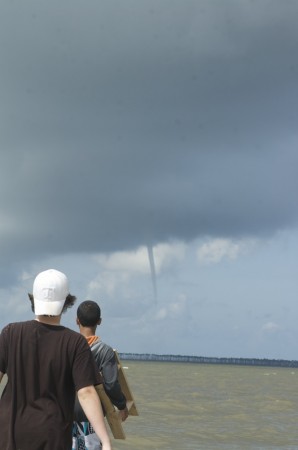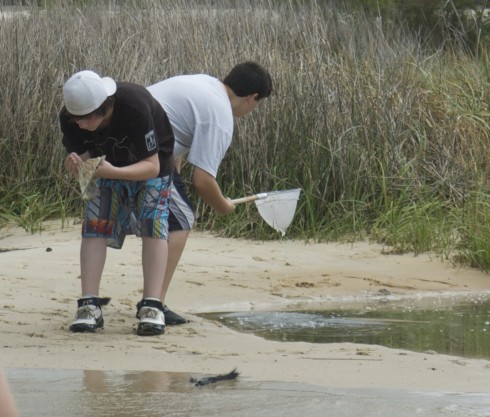
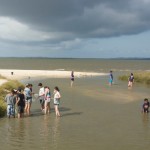
Doing the “sting ray shuffle” through the shallow waters of the estuary of a small stream and the Mississippi Sound, we used dip nets to collect organisms from the sediment-water interface.
We found mostly invertebrates. There were lots of small white crabs. Most, but not all, were too small to pinch.
We also grabbed quite a number of translucent shrimp.
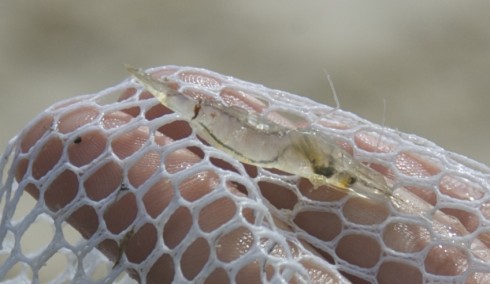
And there were a lot of hermit crabs.
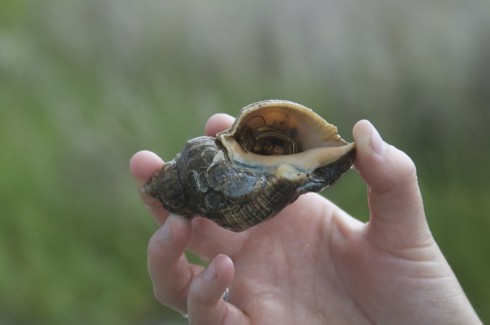
A couple students also picked up some small snakes, but they quickly slipped through the dip net’s mesh and escaped.
Simple and effective, dip netting was a nice way to start the Coastal Sciences Camp.
